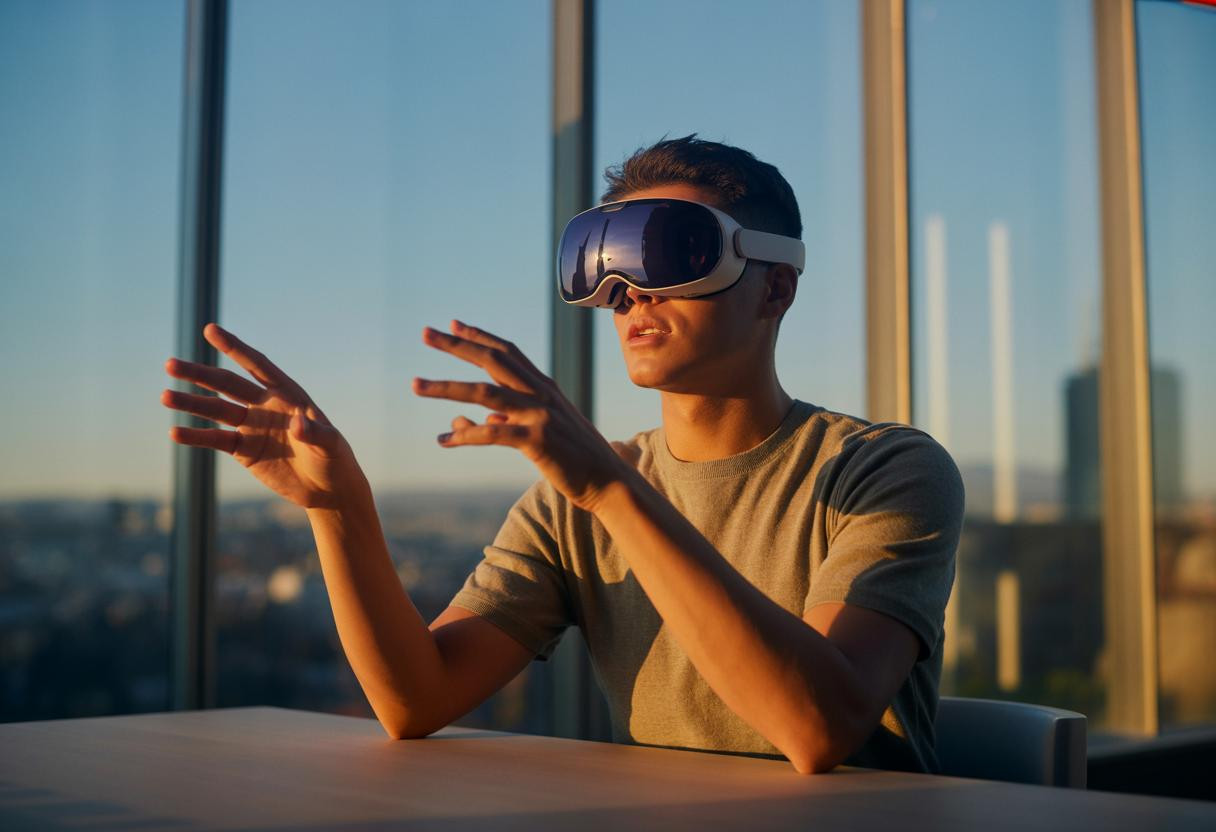Is Apple’s mixed reality headset a revolutionary marvel or an overpriced novelty? One year after its launch, the Apple Vision Pro continues to polarize tech enthusiasts and casual consumers alike. As we approach mid-2025, reviews paint a complex picture of a device that’s simultaneously ahead of its time and struggling to find its place in our daily lives.
The $3,500 elephant in the room
Let’s address what keeps most consumers away: the eye-watering price tag. “The Vision Pro remains a luxury product for tech enthusiasts rather than a must-have device for everyday users,” explains Maria Chen, technology analyst at Future Tech Today. “The innovation is undeniable, but so is the financial commitment.”
Unmatched visual experience that still wows
The Vision Pro’s dual microOLED displays continue to outshine competitors with razor-sharp clarity. Spatial videos feel like memories you can step into, while the pass-through feature blends digital and physical worlds with remarkable precision. Watching movies on the Vision Pro is like having an IMAX theater strapped to your face – impressive, if somewhat isolating.
The app ecosystem: growing, but where’s the killer app?
With over 2,500 apps now available, the platform has evolved significantly. However, the ecosystem still lacks that must-have application that would justify the investment for mainstream users. Many apps remain glorified iPad ports rather than true spatial experiences.
“Apple’s upcoming M5 chip integration and expanded Apple Intelligence features might finally unlock the device’s full potential,” notes developer Sam Reeves, who’s been creating Vision Pro apps since launch. “The hardware was always ahead of the software.”
Comfort remains a challenging balance
Wearing what essentially amounts to a computer on your face presents inevitable ergonomic challenges. Despite aftermarket straps and official improvements, extended sessions still cause fatigue. It’s like wearing ski goggles while trying to do office work – doable, but not ideal for hours on end.
- Battery life remains limited to 2-3 hours of active use
- Weight distribution still causes neck strain during longer sessions
- External battery tether restricts movement
- New third-party accessories have improved comfort marginally
Social acceptance: the awkward stares continue
Using the Vision Pro in public still draws curious looks. The social stigma around wearing headsets hasn’t dissolved as quickly as Apple hoped. This social friction mirrors early smartphone adoption – revolutionary technology that initially made users look peculiar before becoming normalized.
Competitive landscape heating up
The Vision Pro no longer stands alone. With Samsung’s innovative hardware advances and other competitors entering the market at lower price points, Apple’s early technical advantages are narrowing. The next-generation processors like those in AMD’s latest chips with 50 TOPS performance signal where computing power is heading.
Entertainment potential keeps enthusiasts engaged
The Vision Pro excels as an entertainment platform, with immersive content like Murderbot and divisive Star Wars entries like Andor Season 2 showcasing its capabilities. Spatial videos and 3D movies remain its strongest selling points.
- 3D movie viewing experience unmatched by traditional screens
- Immersive gaming shows potential despite limited titles
- Spatial video capture creates compelling personal memories
Is Vision Pro worth it in 2025?
The Vision Pro remains a glimpse into computing’s future rather than its present. For early adopters and professionals in specific fields, its capabilities justify the investment. For everyone else, it’s a fascinating but premature technology that’s not yet essential – especially as social media habits evolve. Like a concept car that actually made it to production, it’s remarkable but impractical for most daily drivers. Wait for version two, or take the plunge now if you’re ready to experience the bleeding edge – just prepare for both wonder and frustration.
